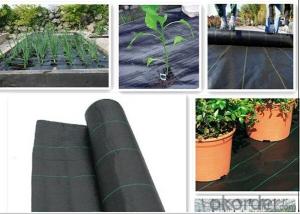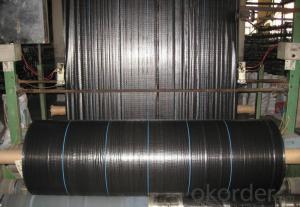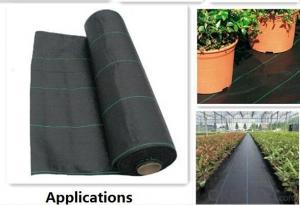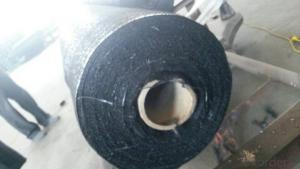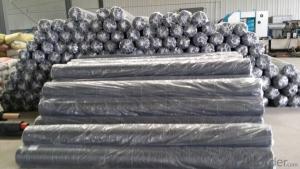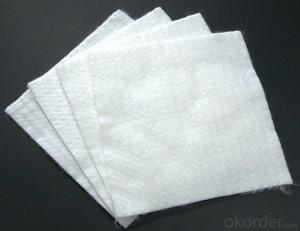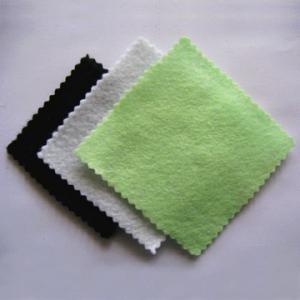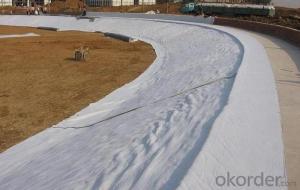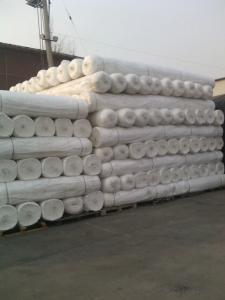Seawall Geotextile Groundcover Fabric for Agriculture/Landscape Fabric
- Loading Port:
- China main port
- Payment Terms:
- TT OR LC
- Min Order Qty:
- 5000 m²
- Supply Capability:
- 1000000 m²/month
OKorder Service Pledge
OKorder Financial Service
You Might Also Like
Groundcover Introduction
Groundcover Geotextiles are composed from synthetic polypropylene/polyester fibres through a mechanical process of needling the fabric and adding, when necessary, a thermo fused process, resulting in a uniform porous structure with excellent tensile strength and chemical deterioration.
Type: 1. Wovens & knitted: use various fibre types in different combinations.
2. Non-wovens: staple or continuous fibres that are heat treated or needlepunched to “fix” fibres relative to each other.
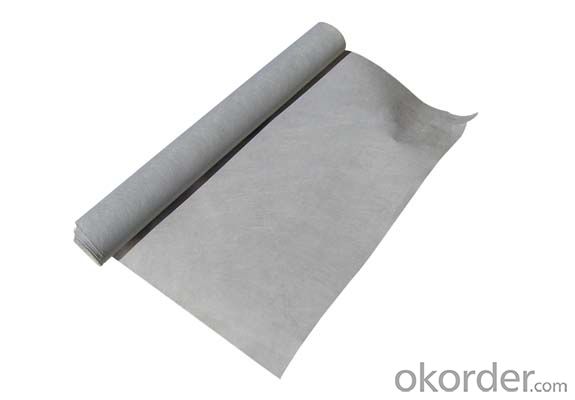
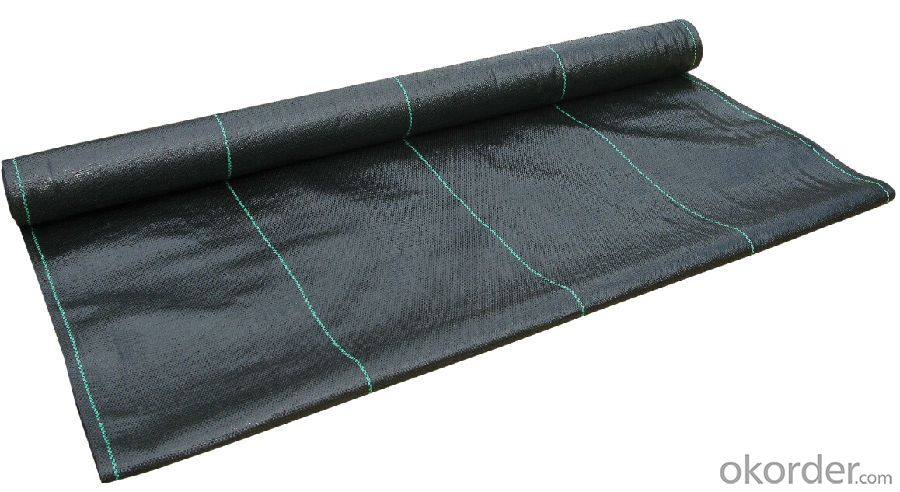
Groundcover Specification
1) Weight / Mass: 75g/m2-400g/m2 .
2) Width: Within 8 m (1m-8m)
3) Length: 50m-100m/roll (as request)
4) Material: PP
5) Color: Black , white , grey, others
6) The biggest geotextile manufacturer/factory in China for many years . The equipment is introduced from Germany.
7) This geotextile can be made of polypropylene (PP).
8) The mass is available from 75g/m2 to 400g/m2 and the width available from 1.0m-8m, monolayer or multilayer (reinforcement geotextiles), long fiber or short fiber.
9) Color: all kinds of color are available. The annual production ability is 10 million square meters.
10) The fabric can also be heat treated by infrared at customer's requirements. Our geotextile are UV stabilized to give protection against aging under exposure to natural ultra-violet light.
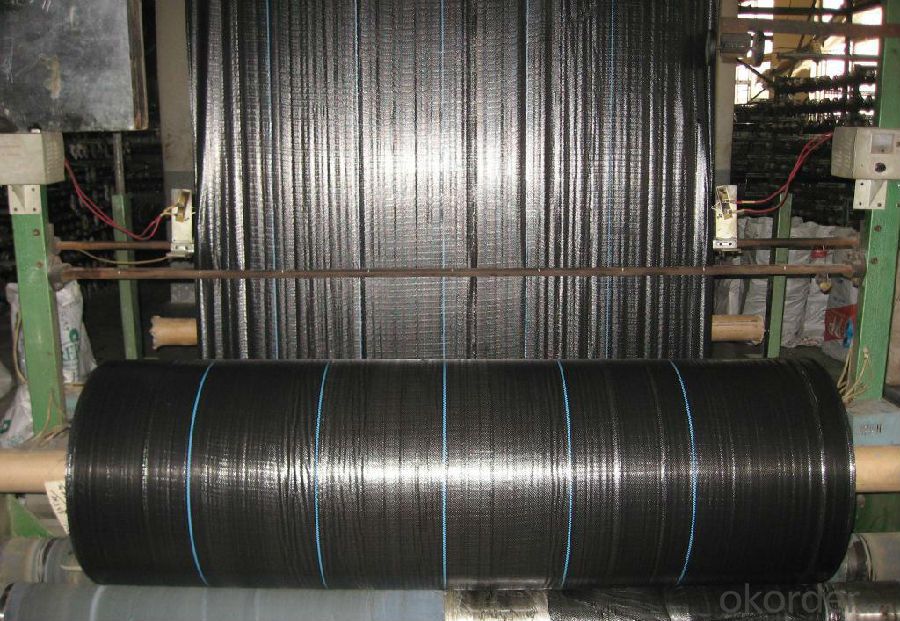
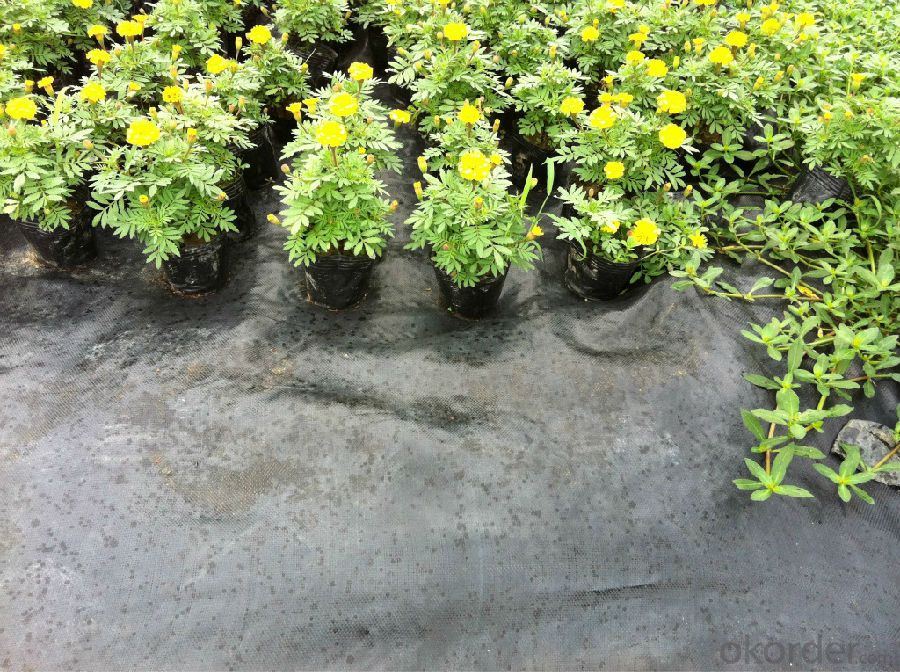
Groundcover Application
1) Filtration
The filtration layer of the dykes, river canal, seacoast, concrete slope, retaining walls. At the same time of preventing the clay granule from passing, it allows the water and the gas pass through freely.
2) Separation:
The isolation of the railway dregs and the roadbed, roadbed and the soft base, surface of the airdrome and parking lot and the groundsill, different dam materials. It isolates the soil and the gravel of two kinds different granule pathway from the groundsill or other buildings.
3 )Reinforcement:
The highway, railway, soil-stone dam, breakwater, airport, backfill soil of retaining wall, slope protection, etc in which distributes the earth stress, prevents the side-displacement of the earth body and improves the earth body stability.
4 )Protection
It prevents the bank from being washed out, protects the bank and the bottom, prevents the water and soil from being washed away.
FAQ:
Q1: What is your minimum order quantity?
A:The minimum order quantity is 5000 ,but it is negotiable.
Q2:What is your payment terms?
A: T/T,Western Union,Paypal,L/C...
Q3:What is your delivery time?
A:Production time usually costs 2-20 days.
Waiting to cooperate with you!
- Q: Can geotextiles be used in the construction of reservoirs?
- Yes, geotextiles can be used in the construction of reservoirs. Geotextiles are commonly used as a separation and filtration layer in reservoir construction to prevent the mixing of different soil layers, provide stability, and control erosion. They can be deployed to reinforce embankments, line channels, or act as a barrier against seepage, ultimately enhancing the overall performance and longevity of the reservoir.
- Q: How do geotextiles help in reducing soil compaction?
- Geotextiles help in reducing soil compaction by acting as a barrier between the soil and external forces such as heavy machinery or foot traffic. They distribute the load more evenly across the soil surface, reducing the impact and preventing excessive compaction. Additionally, geotextiles can enhance drainage and filtration, allowing water to flow through the soil more easily, which helps in maintaining soil structure and reducing compaction.
- Q: Roof 1: 3 cement mortar leveling layer mixed with polypropylene or nylon-6 fiber is the role of what?
- Reduce the expansion coefficient of cement
- Q: What are the different geotextile reinforcement techniques?
- There are several different geotextile reinforcement techniques, including mechanical methods such as soil nails, ground anchors, and geogrids, as well as chemical methods like soil stabilization using polymers or cement additives. Additionally, techniques such as soil wrapping, slope terracing, and retaining walls can also be used to provide geotextile reinforcement in various applications.
- Q: I'm looking for the fabric that goes between gravel and the ground (for a gravel driveway).
- any good irrigation/ landscape suply house will have that material.
- Q: What is the price of composite geotextile?
- Geotextile is divided into polyester short geotextile, staple acupuncture geotextile, polyester filament geotextile, woven geotextile, filament woven geotextile, and so on. Specifications and different models, the price is also different, composite geotextile weight in the 80-1500g / ㎡ between the quality standards are divided into non-standard, whitening A, Sinochem, the general national standard and so on. The t value is generally between 4900 and 7500 yuan / ton, 187 & lt; 6600 & lt; 5604
- Q: How do geotextiles help in reinforcing soil?
- Geotextiles help in reinforcing soil by providing stability and strength to the soil structure. They act as a barrier, preventing soil erosion and enhancing the load-bearing capacity of the soil. Geotextiles distribute the applied loads evenly, reducing the stress and strain on the soil. Additionally, they allow water to drain freely, preventing water accumulation and maintaining the soil's integrity. Overall, geotextiles play a crucial role in reinforcing soil, improving its overall performance and longevity.
- Q: Are geotextiles suitable for use in canal lining?
- Yes, geotextiles are suitable for use in canal lining. They are commonly used to reinforce and protect the canal lining from erosion, provide filtration, and improve drainage. Geotextiles offer durability, stability, and resistance to various environmental conditions, making them an effective solution for canal lining applications.
- Q: What are the different geotextile puncture resistance test methods?
- There are several different geotextile puncture resistance test methods, including the ASTM D4833 puncture test, ASTM D6241 puncture test, and the ISO 12236 puncture test. These tests involve applying a force to a geotextile specimen using a puncture probe or cone, and measuring the force required to puncture the material. These methods help determine the puncture resistance and durability of geotextiles for various applications.
- Q: Are geotextiles suitable for use in coastal erosion control?
- Yes, geotextiles are suitable for use in coastal erosion control. Geotextiles are commonly used in coastal areas to stabilize the soil, prevent erosion, and protect the coastline from wave action. They are effective in reducing soil erosion by filtering sediment and allowing water to permeate through while preventing the loss of soil particles. Geotextiles also provide protection against storm surge and tidal forces, making them a valuable tool in coastal erosion control efforts.
Send your message to us
Seawall Geotextile Groundcover Fabric for Agriculture/Landscape Fabric
- Loading Port:
- China main port
- Payment Terms:
- TT OR LC
- Min Order Qty:
- 5000 m²
- Supply Capability:
- 1000000 m²/month
OKorder Service Pledge
OKorder Financial Service
Similar products
Hot products
Hot Searches
Related keywords





















